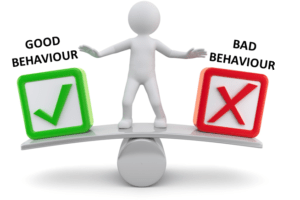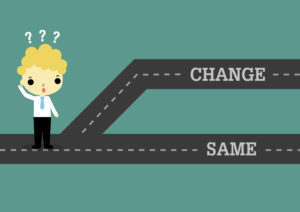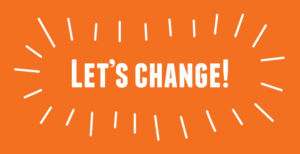Contents
- 1 What Is Behavior Modification?
- 2 Categories In Behavior Modification
- 2.1 Aversion Therapy (e.g., Disulfiram)
- 2.2 Contingency Management (e.g., Vouchers)
- 2.3 Conditioned Response Therapy (CRT)
- 2.4 Contingency Management (CM)
- 2.5 Cue Exposure
- 2.6 Functional Analysis
- 2.7 Habit Reversal Training (HRT)
- 2.8 Imagery Training
- 2.9 Modeling
- 2.10 Multiple Baseline Designs
- 2.11 Negative Practice
- 2.12 Problem-Solving Skills Training (PSST)
- 2.13 Progressive Muscle Relaxation (PMR)
- 2.14 Response Substitution
- 2.15 Stimulus Control
- 2.16 Task Analysis
- 2.17 Token Economics
- 3 How Does Behavior Modification Work?
- 4 Benefits of Behavior Modification
- 5 Behaviors That Behavior Modification Can Modify
- 6 Behavior Modification In You
- 7 Conclusion
What Is Behavior Modification?

Behavior modification is a technique that everyone uses for changing behavior and maintaining them. When people study and understand more about their behaviors and habits, they can change them to be healthier or more productive.
Behavior modification involves changing or modifying behaviors through the use of reinforcement and punishment. It is a way of breaking bad habits by getting into better ones. This can be done with things like quitting smoking, reducing drinking alcohol, learning new sports activities, etc.
Changing behaviors is not an easy task for anyone, but is not impossible tas for everyone. It requires motivation to change one’s behavior as well as knowledge about how to go about changing said behavior. Studying up what you are trying to do can make it easier to accomplish your goal. After finding out what exactly makes this type of modifiable behavior happen and understanding them, you can actually learn the modification.
Categories In Behavior Modification

There are many different techniques that fall into the category of behavior modification. Some of these you might be familiar with and some that may be new to you. You can find a whole list here, but here’s a selection:
Aversion Therapy (e.g., Disulfiram)
It is where something like an alcoholic drink is paired with a negative stimulus like nausea or vomiting after consumption so as to create an aversion to alcohol; people use this in the treatment of alcoholism rather than as a standalone intervention.
Contingency Management (e.g., Vouchers)
This is when the patient gets a reward in form of tokens to quit smoking. They can later exchange these tokens for goods or services.
Conditioned Response Therapy (CRT)
This is where a stimulus that’s associated with the behavior is presented after it occurs so that you learn to associate negative consequences with your bad habit and therefore avoid engaging in it again
Contingency Management (CM)
Here, a reinforcer is a contingent upon a target behavior just like CRT but the reinforcement comes from the environment rather than being created within the individual. A popular example of this is providing monetary incentives for people who abstain from smoking or drug use during treatment programs. This type of intervention has been shown to outcomes even if they aren’t directly involved in the program and there is some evidence that CM can be used to impact several different behaviors.
Cue Exposure
It is where an individual is exposed to stimuli that trigger craving and refrains from engaging in their addiction when cravings occur; this may be done through imagination, visualization, video recordings of real-life situations, or more commonly in vivo exposure. This type of intervention is most often used for addictions to alcohol, nicotine, cannabis, food, gambling, sex, shopping/spending money, exercise, videogames, internet use, work.
Functional Analysis
Here, an assessment is performed of the function of a target behavior to determine why it might be occurring and a secondary reinforcer is substituted to reduce the occurrence of the behavior. This is largely used with OCD patients who have compulsions they perform as a means of coping with their obsessions.
Habit Reversal Training (HRT)
This is when attention is drawn to the unwanted habit, such as hand-washing or checking so that it can be done away from the trigger and another activity practiced in its place which has rewarding outcomes; this can also refer to using positive reinforcement for desired behaviors and ignoring undesired ones.
Imagery Training
Here, an individual mentally rehearses and imagines themselves performing well and succeeding at what they want to achieve by focusing on imagery associated with those thoughts; people sometimes conjunction with behavioral rehearsal and physical practice.
Modeling
Here, an individual observes and imitates a model who exhibits good behavior; you can do this under the guidance of a therapist or family member, such as for social phobias or autism.
Multiple Baseline Designs
This is when you can target several behaviors simultaneously to see if one intervention makes another more effective; this also allows you to increase the validity of your results by controlling for other variables which might impact outcomes like regression to the mean (e.g., patients getting better over time without treatment).
Negative Practice
It is when a person engages in their desired behavior-such as smoking-and then immediately disconfirms it by doing something unpleasant like rinsing their mouth with water; this continues till the person associates smoking as a negative behavior and establishes other behaviors to replace it.
Problem-Solving Skills Training (PSST)
It is when you help an individual learn what to do when they encounter a problem or think about engaging in a problematic behavior so that they can develop alternative coping strategies for dealing with those situations.
Progressive Muscle Relaxation (PMR)
This is where a person engages in the gradual, voluntary tensing and relaxing of each muscle group from head to toe after focusing on how relaxed each part feels; this helps people reduce anxiety and stress levels through physical relaxation.
Response Substitution
It is where undesired responses are replaced with more desirable ones which have rewarding outcomes or secondary reinforcers; you can do it through differential reinforcement, particularly differential reinforcement of other behavior (DRO). It is where a person gets a reward for engaging in another behavior besides their addiction.
Stimulus Control
Stimulus Control is where the presence of stimuli that triggers someone’s addiction comes under control. So to decrease the likelihood that they will engage in that addictive behavior. Examples include locking your door to keep yourself from going out drinking. Avoiding places where you used to drink excessively, and not keeping any alcohol around the house.
Task Analysis
Task analysis is where an individual breaks down a complex behavior into smaller subskills and then designs ways of learning those subskills which you can use for building good habits; children who have language difficulties often use this as it helps them improve their communication skills through reading exercises and functional writing tasks.
Token Economics
Token economics is where you get incentives in exchange for changing behavior; these may take the form of points, stamps on a chart, or other visual cues. They can exchange them for rewards. This might include tokens given out for good behaviors at home or even in an institution.
How Does Behavior Modification Work?

Behavior modification is a way of changing how you act, think, or feel. To change your behavior, you need to understand your current habits and identify the rewards they offer. Then, find alternatives that are more rewarding and easier to maintain.
Finding Alternatives
When you first try to change your behavior, it feels like an uphill battle. But as you make progress and gain momentum, the new behavior starts becoming second nature.
Rewards for Alternative Behaviors
All behavior comes in a pair with rewards. You can develop a list of potential rewards that might work well for you. It’s important to find something rewarding every time you engage in the desired behavior-even just taking a deep breath and smiling right after crossing off one more thing on your to-do list will help reinforce that good habit!
Positive Reinforcement
The reward doesn’t have to come immediately after engaging in the new behavior. In fact, it’s best if it doesn’t come immediately. Positive reinforcement is simply anything that follows a target behavior and makes engaging in that behavior feel good or motivating for you. This reward could be as simple as a mental pat on the back-just thinking about how you’re doing well can help motivate you to keep going.
Benefits of Behavior Modification
Behavior modification can be a useful way to break bad habits and get into better ones. It also happens to be one of the most researched, evidence-based treatments for mental health conditions like OCD or anxiety disorders. There are three main ways it can help people who are struggling with an addiction:
1. Behavior modification helps you break the habit by replacing it with another more positive behavior or thought pattern that leads to similar rewards.
2. Some methods reduce your cravings by allowing you to focus on other things, not your addiction.
3. It can help you learn to deal with urges by identifying the triggers for them. It then allows you to experience them without acting on them or fighting against them.
Behaviors That Behavior Modification Can Modify

Behavior modification works best when your target behaviors are clearly, define, and measurable. Common behaviors that people use this method to change include: shopping, eating out of control, smoking, drinking too much alcohol, using drugs, playing computer games excessively, procrastinating, and watching too much TV. You can also modify other behaviors like social interactions, situations you avoid, and even patterns of thoughts-just be sure to identify your target behavior very specifically before starting.
Behavior Modification In You

These are the steps that you can follow to have your journey of behavior modification:
Identify Your Target Behaviors
Taking note of the behaviors that you want to change is the first step towards making those changes happen. Consider all the habits you would like to break or replace with healthier alternatives. Record these in a journal so you don’t forget them!
List Potential Rewards
Think about how your desired behavior will make you feel good or motivate you once it has become routine or automatic. Write down as many rewards as possible for each specific behavior (e.g., “When I finish exercising every day, I will feel confident and in control,” or “When I finish my coursework early, I’ll be able to relax and enjoy the rest of my day”).
Monitor Your Progress
Keep track of the behaviors you’re working on with a journal. Write down when and where your target behavior happens (e.g., “After dinner” or “At work”). Track how many times throughout the week it occurs and how strongly you felt at that moment (0-100). You can also record rewards you received for making progress towards your goals.
Find Alternatives
Once you’ve developed a list of potential rewards for your target behaviors, it’s time to find replacement behaviors that are more rewarding than what you’re trying to change. Set up an experiment by engaging in your target behavior first, then trying out the alternative behaviors you’ve identified. When choosing alternatives, be sure they are positive and offer good feelings or rewards!
Investigate Your Progress
Conduct another progress monitoring exercise after you have tried all of your replacement behaviors for a week or two. Compare how many times you engaged in each target behavior with how often you performed the alternative behavior instead. If any of the alternative behaviors were particularly successful, write them down so that they’ll become part of your long-term routine.
Practice Mindfulness & Maintain Consistency
Once you can engage in your replacement behaviors without too much trouble, try making them automatic. The more often you practice, the easier it will be to let go of your old behaviors. You can take some time for setting up a routine daily after you complete replacement behavior. After doing these, you can do whatever you like or relax.
Conclusion
Behavior modification is a way of breaking bad habits and getting into better ones. Whether that means quitting smoking or cutting back on alcohol or trying out new sports activities. In this article, we have provided you with an overview of the different types of behavior modification techniques. Now you can decide which one best suits your needs.
If you are looking for affordable Online Counseling MantraCare can help: Book a trial therapy session


